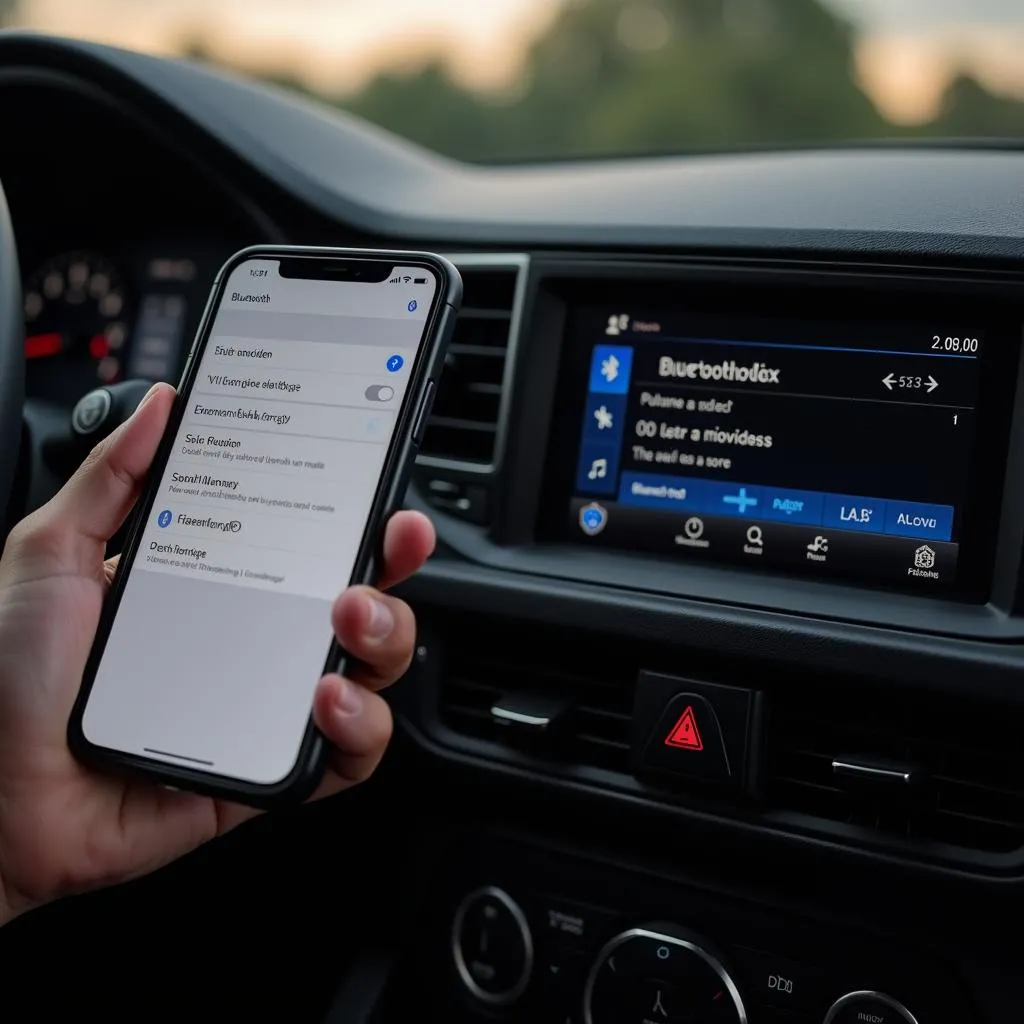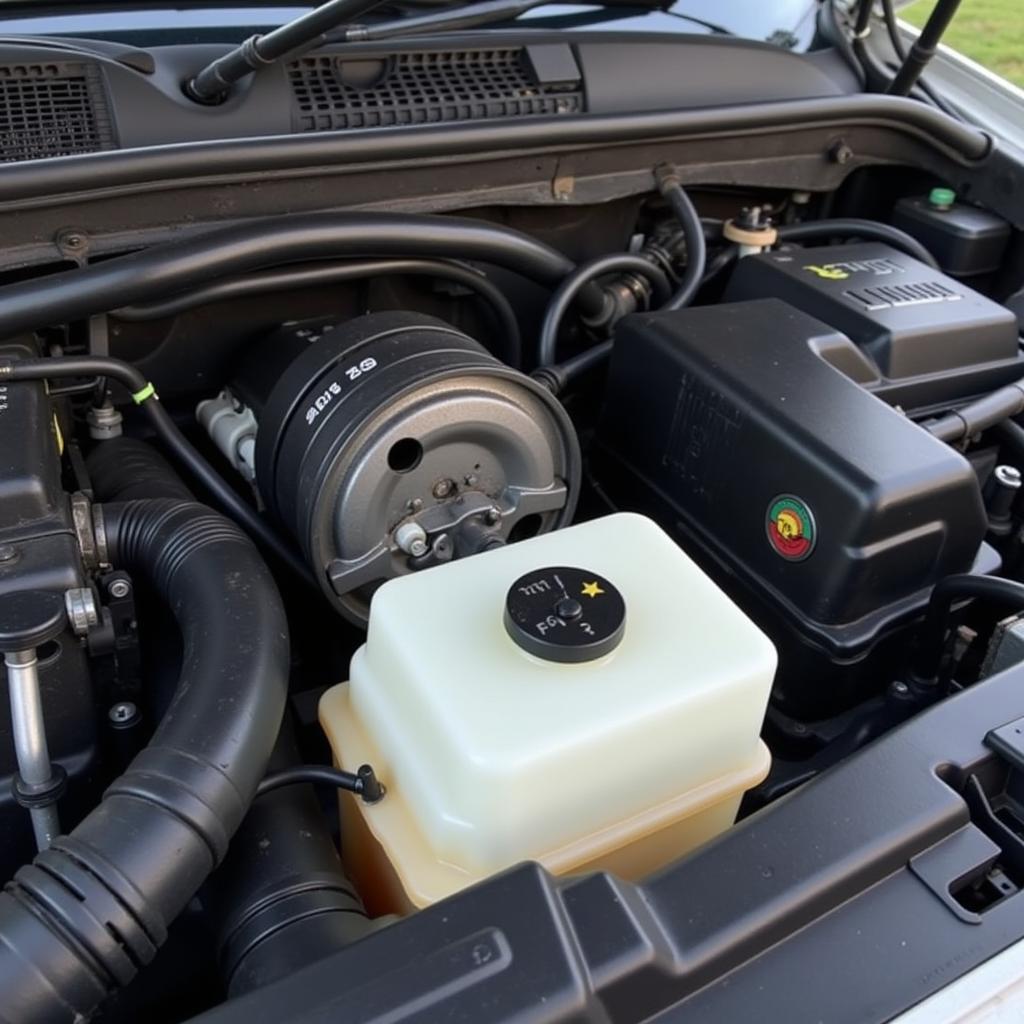The 1986 Corvette brake pressure warning switch is a crucial safety component that alerts you to potential issues within your braking system. A malfunctioning switch can lead to unnecessary worry or, worse, mask a genuine problem. This comprehensive guide dives into the common issues surrounding the 1986 Corvette brake pressure warning switch, offering practical solutions and expert insights for DIY enthusiasts and seasoned mechanics alike.
Understanding the 1986 Corvette Brake System and its Warning Switch
The brake system in your 1986 Corvette relies on hydraulic pressure to engage the brakes. The brake pressure warning switch monitors this pressure and activates a warning light on your dashboard if it detects an imbalance or a drop below a safe threshold. This system is designed to alert you to potential leaks, worn brake pads, or a failing master cylinder. Ignoring this warning light could lead to dangerous driving conditions.
Common Issues with the 1986 Corvette Brake Pressure Warning Switch
Several issues can cause the brake pressure warning light to illuminate, even if there isn’t a significant problem with your brakes. One of the most common culprits is a faulty brake pressure warning switch itself. Over time, the switch can become corroded, worn, or simply malfunction, triggering the warning light unnecessarily.
Another common issue is a low brake fluid level. Before panicking about a faulty switch, check your brake fluid reservoir. Low fluid can trigger the warning light. If the fluid is low, top it off and check for leaks.
A sticking or malfunctioning combination valve can also trigger the warning light. The combination valve is responsible for balancing the front and rear brake pressures and also acts as a proportioning valve.
Finally, air in the brake lines can also mimic a low-pressure situation and activate the warning light.
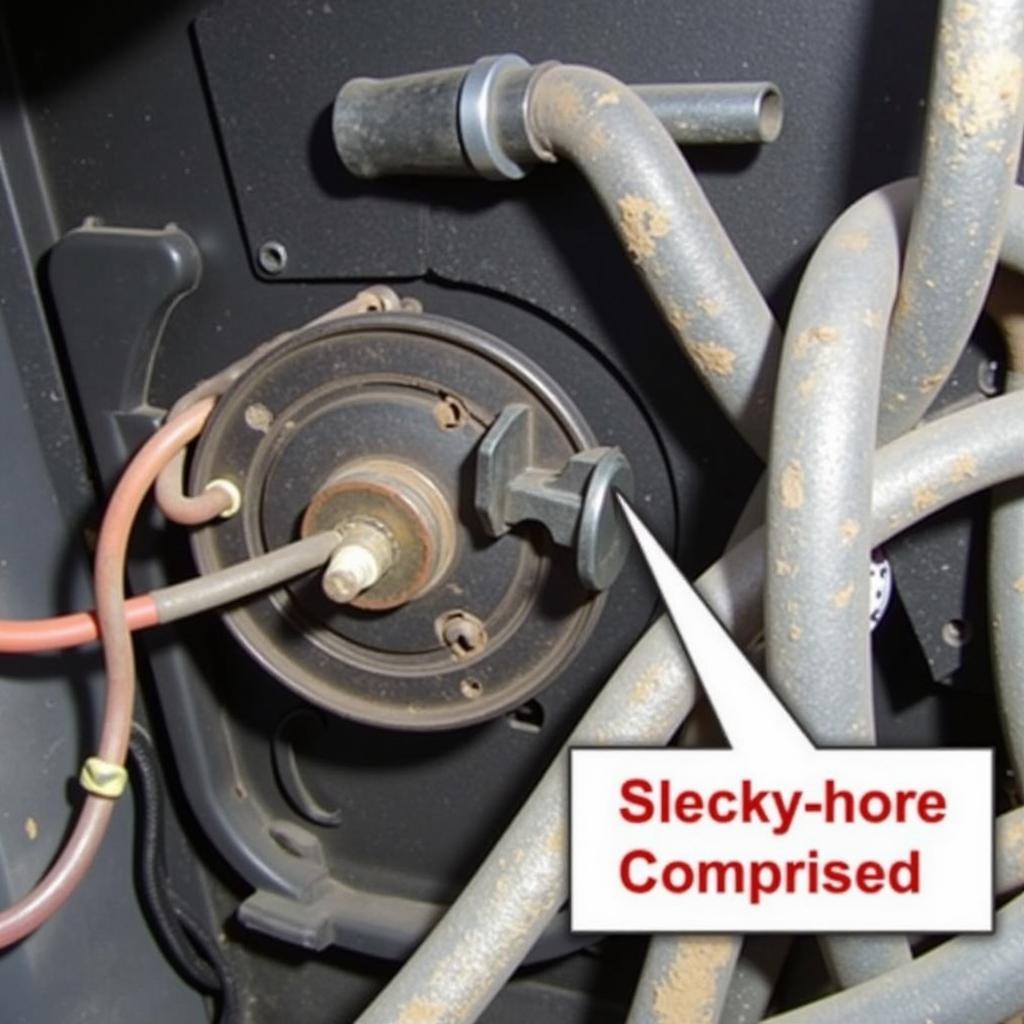 1986 Corvette Brake Pressure Warning Switch Location
1986 Corvette Brake Pressure Warning Switch Location
Diagnosing a Faulty 1986 Corvette Brake Pressure Warning Switch
Pinpointing the exact cause of a lit brake pressure warning light requires systematic diagnosis. Start by visually inspecting the brake lines for leaks. If you find any leaks, address them immediately. Next, check the brake fluid level. If it’s low, add fluid and recheck the warning light. If the light remains on, you can test the brake pressure warning switch directly using a multimeter.
Testing the Switch with a Multimeter
Disconnect the electrical connector from the brake pressure warning switch. Set your multimeter to the ohms setting. Touch one probe to each of the switch terminals. With normal brake pressure, the switch should read open (infinite resistance). When you simulate low pressure by depressing the switch plunger, the multimeter should read close to zero ohms. If the switch doesn’t behave this way, it’s likely faulty and needs replacement.
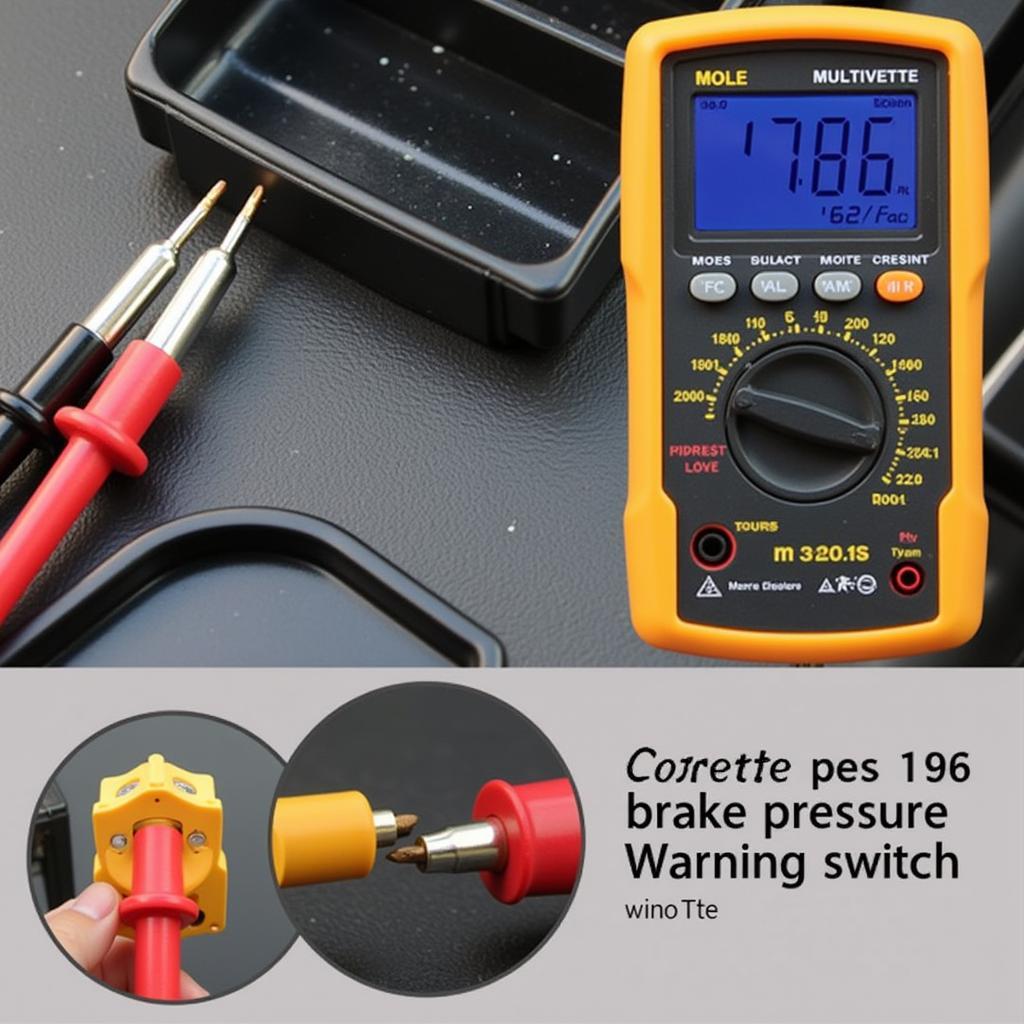 Testing 1986 Corvette Brake Pressure Warning Switch with Multimeter
Testing 1986 Corvette Brake Pressure Warning Switch with Multimeter
Replacing the 1986 Corvette Brake Pressure Warning Switch
Replacing the brake pressure warning switch is a relatively simple task. First, disconnect the electrical connector and then use a wrench to unscrew the switch from its port. Install the new switch, making sure to tighten it securely. Reconnect the electrical connector, and then bleed the brake system to remove any air that may have entered during the process.
“Remember, bleeding your brakes is crucial after any work on the hydraulic system,” advises John Smith, ASE Certified Master Technician. “Failing to bleed the brakes can lead to a soft pedal and reduced braking performance.”
Bleeding the Brakes
Bleeding the brakes involves removing air from the brake lines. This is typically done with the help of a friend. Start with the wheel farthest from the master cylinder and work your way closer. Open the bleeder valve on the brake caliper, have your friend depress the brake pedal, close the valve, and then have them release the pedal. Repeat this process until no more air bubbles come out of the bleeder valve.
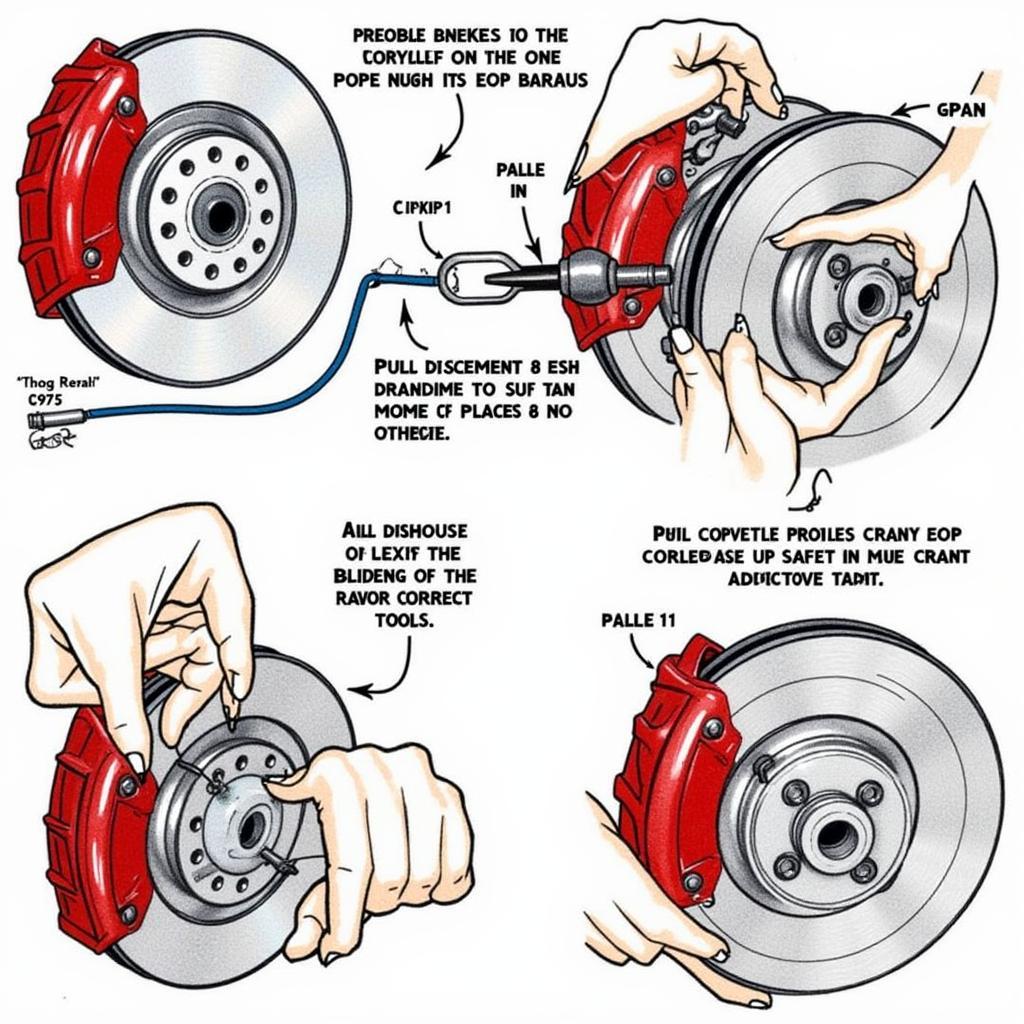 Bleeding 1986 Corvette Brakes
Bleeding 1986 Corvette Brakes
Conclusion
Addressing issues with your 1986 Corvette brake pressure warning switch is essential for safe driving. By following the diagnostic and replacement steps outlined in this guide, you can ensure your brake system is functioning correctly. Don’t hesitate to seek professional help if you encounter difficulties or are unsure about any aspect of the process. A properly functioning brake system is paramount for your safety and the safety of others on the road.
FAQ
- What is the function of the brake pressure warning switch? It alerts you to potential issues in the brake system, such as low fluid or pressure imbalances.
- Where is the brake pressure warning switch located on a 1986 Corvette? It’s typically located on the master cylinder or along the brake lines.
- How do I test the brake pressure warning switch? Use a multimeter to check for continuity when the switch is depressed and open circuit when it’s not.
- Can I drive with a faulty brake pressure warning switch? While it might be drivable, it’s unsafe as you won’t be alerted to potential brake problems.
- How do I replace the brake pressure warning switch? Disconnect the electrical connector, unscrew the old switch, install the new one, and bleed the brakes.
- Why is bleeding the brakes important after replacing the switch? It removes any air that might have entered the system, ensuring optimal braking performance.
- What should I do if the warning light stays on after replacing the switch? Further diagnosis is needed, potentially involving the combination valve or other brake components. Consult a professional if needed.

